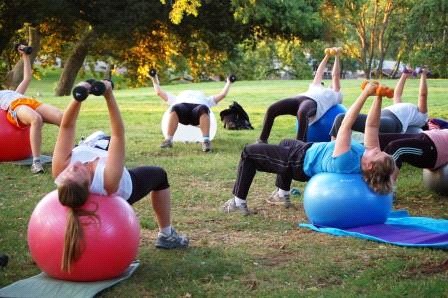Do you hate working out? GROUP WORKOUT CLASSES ARE A WAY FOR YOU TO GET HELP
Strangely, it is easier to hit the snooze when your alarm rings at 6 AM than to get out of bed and start your day. We have the perfect solution if, like us, your sweat is more critical than your snooze.
Can dancing, lifting weights, and punching with a group instead of alone make it easier to exercise? Our personal opinion is supported by science. There are many benefits to group fitness classes. You should get together with your group for these reasons.
Get Rid of the Fitness Guesswork
Going into a gym laden with intimidating equipment and rows upon rows of heavy weights could be more inspiring. You need to figure out where to begin! How do you work these things? Group workout classes are a great option because an instructor leads and motivates each class.
This means you can create a workout plan or be a certified fitness expert. All you have to do is show up, follow the instructions, and enjoy your workout. Each class is intended to be a full workout. It includes a warm-up and cool-down as well as explanations of each movement. Easy peezy!
Take a Dose of Motivation
If you are one of those people who hate working out, you will need a class that provides extra motivation. This is exactly what group fitness classes do. Even if your initial enthusiasm for the class is low, you will soon feel more motivated by the instructor’s positive attitude and the infectious energy of your classmates. You’ll soon be able to move along with the rest of the class.
Building Relationships & Community
You’ll begin to see familiar faces as you attend class more often. Smiles and waves can turn into greetings and conversations before and after class. Your group fitness friends will soon become real friends.
Group fitness classes offer many benefits, but one of them is the friendships, support, and sense of community you will make. You’ll enjoy attending class knowing you’ll make friends, which can help you look forward to it. Building fitness friendships can also be beneficial for your health. The University of Southern California conducted a study and found that people who exercised with friends were more likely to enjoy it than those who did not. It’s no surprise!
Added Accountability
You can easily hit the snooze button on an alarm clock and forget about it. However, no one is expecting you to be there. Once your group fitness instructor and fellow classmates become used to you, they will start asking questions if you miss a class. Dr. Dian Griesel is the co-author of turboCharged. In an article for NBC News, she stated, “Workouts with other people improve consistency because they require commitment. Positive peer pressure and ‘no shows’ or cancellations are noticed by others, which can reduce the temptation to skip a workout…or quit.
More Workout Options
It is boring to do the same exercise over and over again. This can lead to a plateau in your fitness. You’ll always get a different workout when you work out with other people in a group setting. Your instructors will only be bored if you do the same thing twice. Each class will feature new moves and combinations. There are many classes that you can take throughout the week. This will benefit you from not having to adapt your body to one exercise method.
Fun and Fitness All in One
Are you looking for upbeat music? Check. Do you have a friendly and supportive instructor? Check. Are you one of these amazing people? Check, check, check! Working out with a group is more enjoyable . You’ll not only enjoy the natural happiness brain chemicals (aka happy hormones) that exercise creates, but you will also be surrounded with like-minded people and make new friends.
More Fitness Results
Exercise is supposed to help you improve your mental and physical health. You’ll be thrilled to discover that exercising with others can improve your fitness results. The Kohler Effect states that no one wants to be weakest in a group, and therefore will work harder in group settings. This effect can be used to your advantage when you workout with friends. You’ll be able to work harder if your friends are faster or more powerful than you.
The theory is supported by scientific research. The paper published in the Journal of Sport and Exercise Psychology showed that plank-sitting partners were 24% more likely to hold their planks for longer than those who planked alone. This means that your natural competitive instincts can make it easier to work out in a group. For even more motivation, you might want to be next to the most fit person in class.
Are You Tired of Hating Your Workouts.
Jazzercise is a great option for those who don’t like working out. We believe in group fitness and the positive effects it can have on our lives. We are proud to offer group fitness classes. You can find the right class for you , whether you want to increase your cardio or strength or all of the above.
